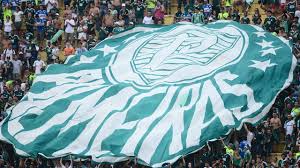By Ricardo Setyon
November 4 – Currently in their Centenary season, Palmeiras is the Brazilian club with the most deeply rooted links to Europe. But its 100th birthday is proving an unhappy one as it battles out of relegation danger, conflict with contractors over its new stadium, and poor finances that require a continual bail-out from its owner.
Originally called Societá Sportiva Palestra Italia, the Sao Paulo club changed their name in 1942 to Palmeiras when Brazil’s government joined the Second World War on the side of the allies, against Italy, Germany and Japan.
The club went from strength to strength in the post-war years becoming known as ‘The Academy’ in the 1950s and later producing Brazilian greats such as Marcos, Rivaldo, Roberto Carlos, Edmundo, Cafú, Cesar Sampaio, Zinho, Alex and Djalminha. Coach was Luis Felipe Scolari.
But after three different coaches this season those days seem long gone as the club languished at the bottom of the Brasilierao staring at another relegation.
While change has taken place on the pitch, it has also taken place in the boardroom with the exit of former president Eduardo Tirone – he presided over Palmerias’ second relegation in 10 years in 2012.
In came Paulo Nobre, a business tycoon came with bright ideas and lots of money. But he has struggled and has had to pump in £28 million to pay debts and keep the club running.
The climax of the centenary celebrations should have been the opening of the new stadium on the official date of the club’s birthday – August 26.
Instead, public arguments, and a dispute with construction company WTorre, over ownership of VIP boxes, stadium marketing rights and other issues have left the stadium almost completed but still not ready to host matches.
Meanwhile the team has struggled with the management of the playing staff being a big part of the club’s problem. The club’s most expensive ever player, Chilean Jorge Valdivia, has failed to perform and has become more famous for a long list of ill-discipline, scandals, violence on the pitch, red and yellow cards, and endless absences through injury.
The club also off-loaded one of the best strikers in the Brazilian league, Argentinean Hernán Barcos, to Gremio of Porto Alegre in exchange for 5 players. While Barcos has gone on to score goals and ignite Gremio, it is unclear what Palmeiras received in return except the search for another striker to save them.
The club have had as many as 42 players on the roster this season. At the time of writing Palmeiras had in their main squad 7 goalkeepers, 7 defenders, 6 full backs, 6 defensive midfielders, 8 midfielders and 8 strikers….
Ricardo Gareca of Argentina was brought in to manage the club May 25 and arrived with a new style of coaching and five Argentinean players. Three months later Gareca was fired, butthe Argentinean players remained.
Now, under the management of Dorival Junior, Palmeiras’ rollercoaster ride continues but after a humiliating defeat 0 – 6 to Goiás, a series victories have taken them off the bottom to just below mid-table. The tide might just be turning for the club.
Fan unrest and violence has marred matches, but signs are that safety from relegation for a third time in 12 years can be achieved. Something the club desperately needs if it is to start life positively in its new, modern stadium.
Contact the writer of this story at moc.l1745329444labto1745329444ofdlr1745329444owedi1745329444sni@n1745329444oytes1745329444.odra1745329444cir1745329444

